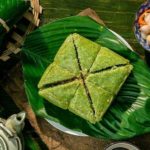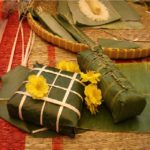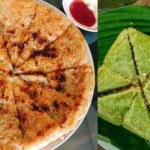Every time Tet comes and spring arrives, the Vietnamese people never lack chung cake and giay cake in the traditional Tet feast, every household has a few pairs of cakes to offer to the ancestors.
It can be said that chung cake and giay cake in the Vietnamese people’s consciousness are the tradition of “remembering one’s roots”. They are a characteristic dish of the nation in the first days of the new year.
1 Origin of chung cake and giay cake
According to legend, after defeating the An invaders, the 6th Hung King ordered his children to offer gifts to the king, any gift with special significance, the king would pass the throne to that person.
The king’s children all searched for delicious and rare items to offer to their father except for the 18th child of the Hung King, Lang Lieu, who was mild-mannered and filial, but because his mother passed away early and he did not have as much wealth as his brothers, Lang Lieu was too embarrassed to have anything to offer the king.
At this time, while in a deep sleep, Lang Lieu dreamt of a deity who advised: “There is nothing in the sky and on earth more precious than rice, it is the food that nourishes people. So use glutinous rice to make round and square cakes to symbolize Heaven and Earth. Wrap them in leaves and place the filling inside to represent the image of one’s parents.”

Lang Lieu woke up and followed the advice to offer it to the Hung King. The king found it delicious and asked about the meaning of the cakes. After hearing the story from his son, the king was moved and named the cakes “chung cake” in square shape symbolizing the Earth, “giay cake” in round shape symbolizing the sky.
And so, on Tet days, the king ordered the people to make these two types of cakes to offer to the ancestors, praying for a favorable harvest for the new year.
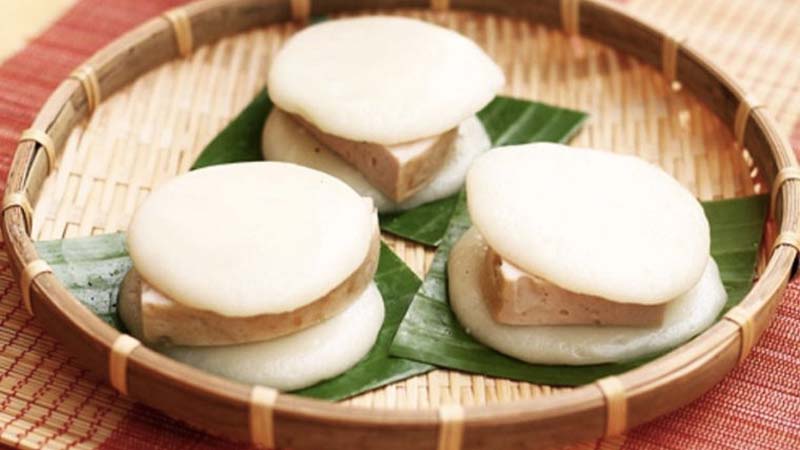 Giay cake
Giay cake
In order for foreigners to know about chung cake, some of you still call chung cake “Chung cake”, of course, if foreigners have lived in Vietnam for a long time and have enjoyed this food, they will understand that it is chung cake.
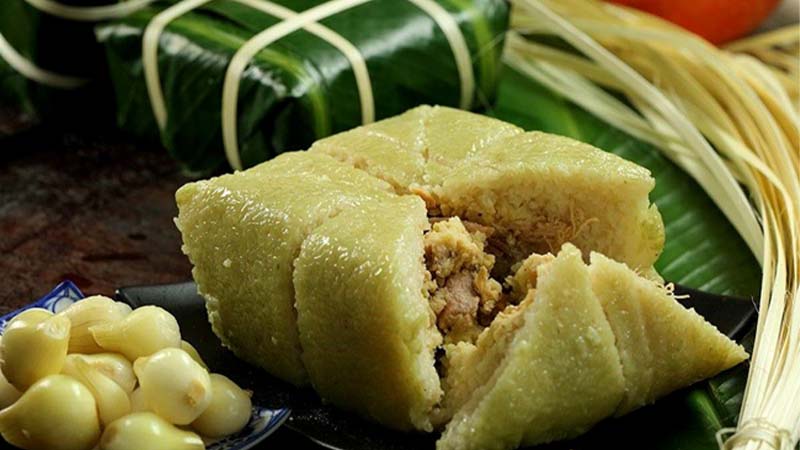 Chung cake
Chung cake
However, when going abroad, if you still introduce chung cake as “Chung cake”, they will understand it as a type of sweet cake made from flour like other cakes such as sponge cake, birthday cake that are popular in other countries.
Therefore, in order for international friends to understand what chung cake is, you should always call it “chung cake” and introduce the ingredients and how to make a chung cake. In the world, terms such as “sushi” or “pizza” are also the original names of these foods. Similarly, with giay cake and banh tet, we also keep the original names
2 Meaning of chung cake and giay cake on Tet
Along with the ancient legend, chung cake, giay cake carries in it all the civilization of a rice agricultural society at that time.
The outside of chung cake is wrapped in dong leaves that are available in nature, and inside is made from glutinous rice, green beans, onions, pork, … all are traditional cooking ingredients of the nation.
That is why chung cakes appear on Tet to show gratitude to the heaven and earth for giving favorable weather, to bring a bountiful harvest and a warm life for people.
Chung cakes on Tet also express filial piety of children towards their parents, and that is why the custom of using chung cakes as gifts to offer to parents also originated from this.
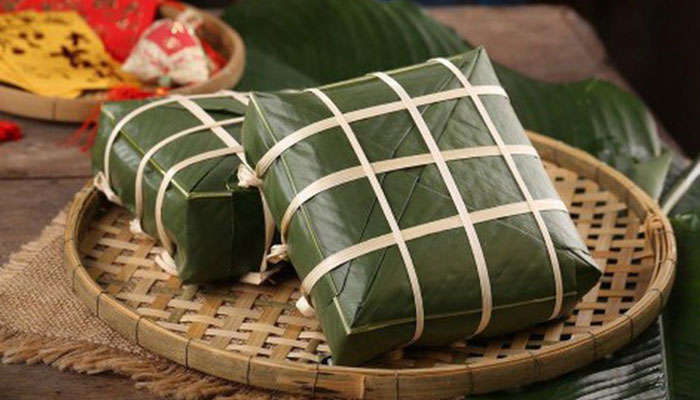
As for giay cakes with a round shape, white color, with the upper surface shaped like an arc resembling the sky, the ancient Vietnamese believed that the sky is where the gods reside, so giay cakes are often used for ceremonies to the heavens and gods, praying for favorable weather for a warm and prosperous year.
3 Description, characteristics of the two types of cakes
Chung cake
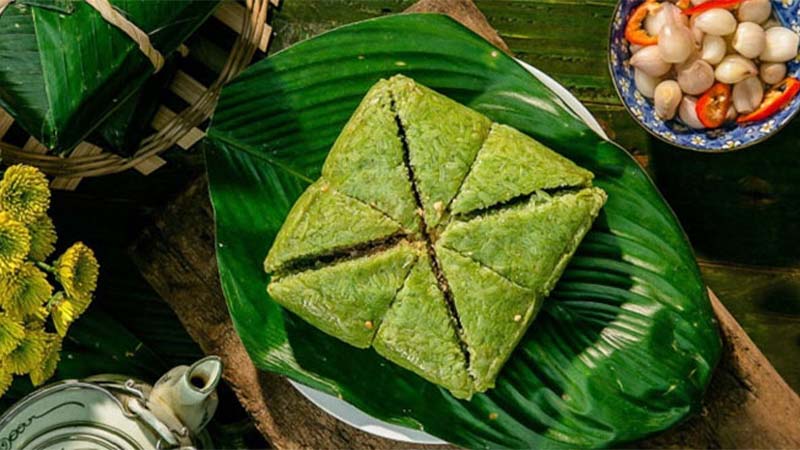 Characteristics of chung cake
Characteristics of chung cake
Chung cake is made from very simple and easy-to-prepare ingredients such as sticky rice, dong leaves, meat, crushed mung beans.
It is a harmonious combination of many flavors such as the fragrant stickiness of sticky rice, the sweet bitterness of mung beans, the fatty and fragrant taste of pork fat, and the characteristic aroma of spices, onions, dong leaves. This is a scientific and creative combination suitable for the nutritional needs of different ages.
Giay cake
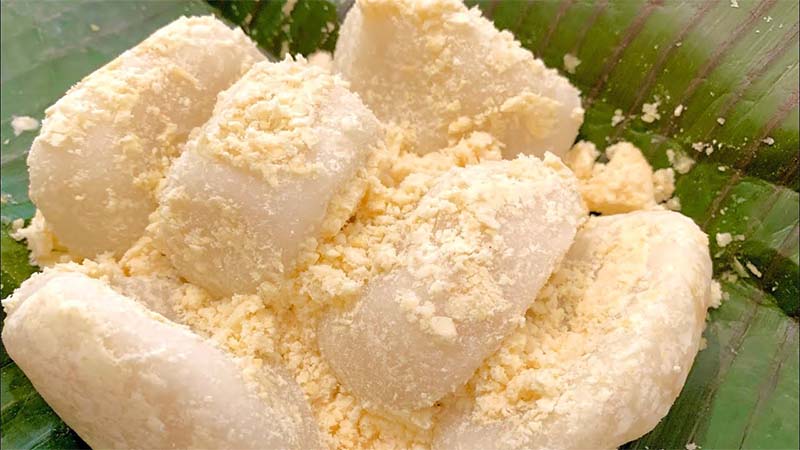 Characteristics of giay cake
Characteristics of giay cake
The most common type of giay cake is white, without filling, small enough to fit in the palm of your hand, pressed into a round shape about 1 to 2 cm thick.
Every two cakes make a pair. Customers can choose to buy one or a pair and usually sandwich it together with gio lua, gio bo, cha que, ruoc, …
Chung cake and giay cake have become a cultural feature, a traditional and long-standing dish in Vietnam. This unique feature has contributed to beautifying the image of Vietnam in the eyes of international friends. No matter where they are, everyone longs to go home to enjoy the pot of cakes on New Year’s Eve.
Exploring the Flavors of Glutinous Rice in Chung and Tét Cakes
With just weeks until the end of the year, many Vietnamese are already busy preparing for the traditional New Year’s Eve celebration which includes making offerings of banh chung and banh tet cakes. But with so many varieties of sticky rice to choose from, which type of rice is the best to use for making these tasty cakes? Here, we look at the many scrumptious options of sticky rice for creating the perfect banh chung and banh tet cakes.
Essential Foods to Have in the Fridge Before the Lunar New Year
As the Tet holiday approaches, Điện máy Xanh has some helpful tips on what to stock up on and store in the refrigerator in preparation for the festivities. With most of the markets and supermarkets closing for the holiday, it is essential to have the necessary food on hand. Read on to find out what to keep in your refrigerator!
























